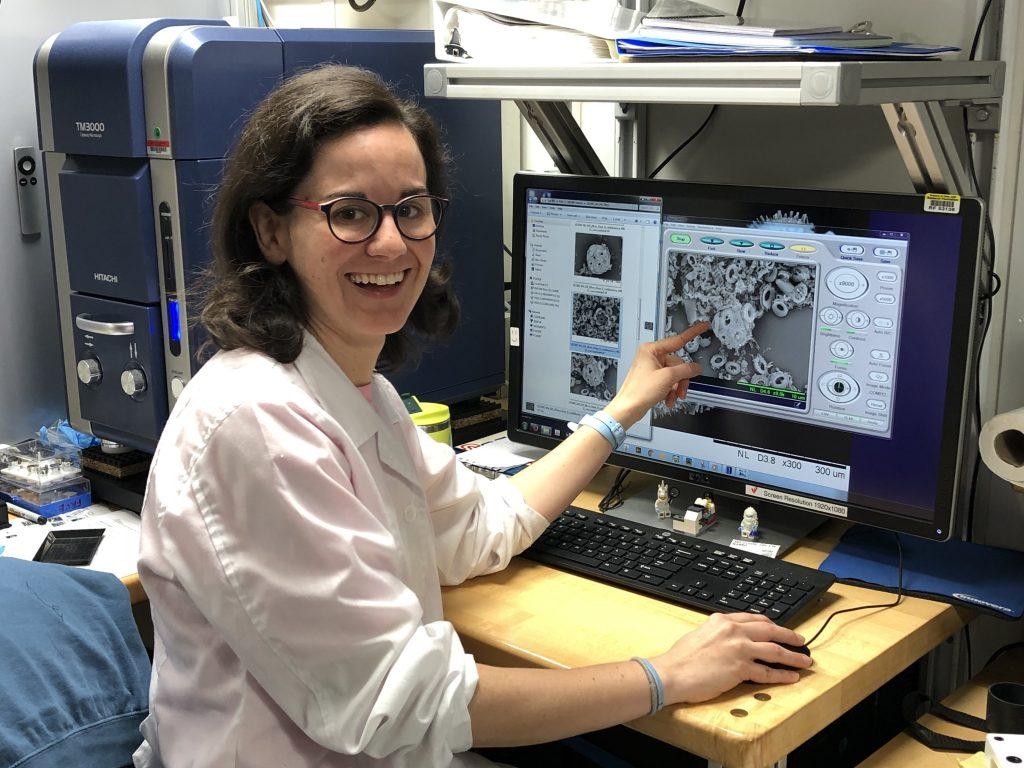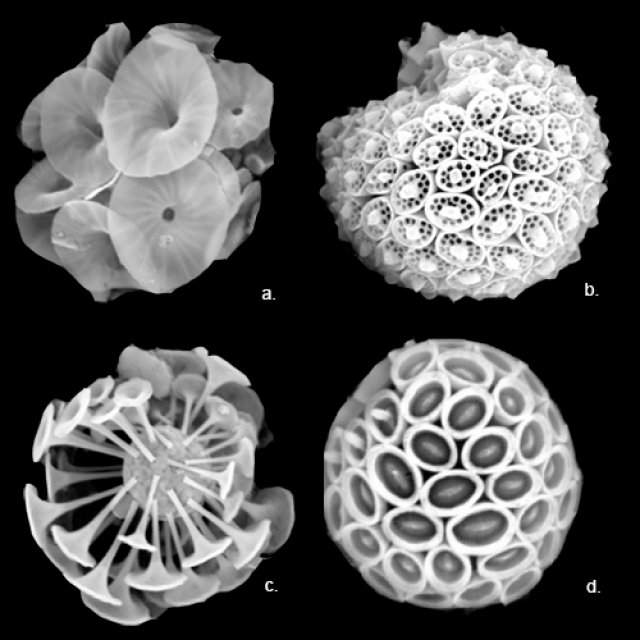
Career Spotlight: Paleontologist Mariem Saavedra Pellitero

Mariem Saavedra Pellitero Interview
Please describe your job duties while on the JR. What will you be doing on a daily basis?
-
-
-
-
-
-
-
-
- I look at calcareous nannofossils to establish age models. Additionally, I am taking water samples to study extant coccolithophore distribution in the Southern Pacific Ocean.
-
-
-
-
-
-
-
Describe one instrument or tool that is essential for you to do your job? Or a piece of equipment on the JR that is useful and why – what does it do?
-
-
-
-
-
-
-
-
- I use a polarized light microscope and sometimes a Scanning Electron Microscope.
-
-
-
-
-
-
-
Why is your work (or research) important? What question are you trying to answer or how does your work/research help assist/advance scientific knowledge?
-
-
-
-
-
-
-
-
- I think it is! Coccolithohores and calcareous nannofossils play a double role in the carbon cycle, they calcify and they photosynthesize, so it is important to assess and quantify their role in this rather unexplored sector of the Southern Ocean.
-
-
-
-
-
-
-
Why the ocean? What made you choose a career at sea or career that involves the ocean?
- I always wanted to became a Paleontologist (since I was 4!), but, it was not until I met my Ph.D. supervisor (Dr. Jose Abel Flores), during my last year Geology, that I changed from dinosaurs and macrovertebrates to tiny microscopic fossils.

What are you most excited about for this expedition and/or being on the JR?
- THE SCIENCE! and the interaction with other scientists of different disciplines.
What are three things you think are needed for a successful expedition at sea? And Why!
- A multidisciplinary team of scientist with different expertise and perspectives will ensure a more complete and exhaustive scientific approach.
- Good lab equipment, as well as competent scientists, will ensure precise results and good reproducibility of data.
- Communication and interaction amongst the labs/disciplines are essential to accurately produce and interpret data. IODP Exp383 is a good example of scientific collaboration and team work.
- Nice people because we have to work together 12 hours a day for 2-months, so pleasant personalities are important.
- Good food! 🙂
If you could answer one question about our Earth – what would it be and why?
- What will happen with climate change and global warming on Earth in the upcoming 50 years? The Earth is our home, so we should know its history and take care of it for future generations.
What is your favorite sea creature and why?
- Coccolithophores…I spent so much time studying them that they have become an important part of my life. 🙂

Microscope by Luc Beaufort Exp363.
When did you know you wanted to pursue a career in science or an ocean science career?
- When I was 4 yr old and I saw a dinosaur skeleton for the first time at the science museum in La Plata, Argentina – I was convinced! My parents were also positive influences in the development of my academic career.
What do you personally hope to gain or experience while on EXP383?
- I would like to be able to think, not only about the small details (i.e. my micropaleontological expertise or “nanno’ world), but also to see the big picture. This will help me to contribute to Exp383 and gain insights into some of the big scientific questions we are trying to answer.
What message do you have for anyone considering a career at sea or a career involving the ocean sciences?
- I am the most seasick person you can ever imagine. Therefore, if i am able to sail and work in the Southern Ocean…anybody can do it! My message is: if you have passion for science and the sea, you should pursue it! It might be difficult and challenging sometimes, but in the long run it is very rewarding.
What do you do back home when not on the JR?
- Hmm… many things. I love fencing, sewing, reading (comic books, sci-fi, etc), watching TV shows (I am still catching up with Star Trek), listening to music, drawing, baking muffins, playing with Legos, planning my upcoming wedding, etc. I especially enjoy being creative.
Do you get sea sick? If yes or sometimes, please also select the other tab and describe how you cope with it.
- Yes: I often feel so sick that I actually throw up a lot, especially during the first week. Pills/the patch help a lot, but also focusing on work. Drinking sparkling water, coke, and tea are essential and, along with any ginger-derived products, make me feel better. When I feel really bad, I go to the lower decks, where the ship is more stable.
The need for space comes in many forms. Which type of space, in general, is the most important to you?
- ___Personal Space
- _X_Creative Space
- ___Outdoor Space
- ___Emotional Space
- ___Physical Space
- ___Spiritual or Meditative
- ___Outer Space
- ___Community Space
- ___Quite Space
- ___Productive/Work Space
- ___Digital/Virtual Space
- ___Public Space
- ___Inner Space
- ___Other:
Why that type of space? What makes it important to you and will it be available while on the JR?
- Because it allows me to get out of the daily routine and craziness of the work while on the JR. I try to bring my creative side into the JR labs every day, especially when I am not seasick. 🙂










Like this article, particularly because I, too, enjoy coccoliths! Nice to see they are serving valuable purposes in this expedition.